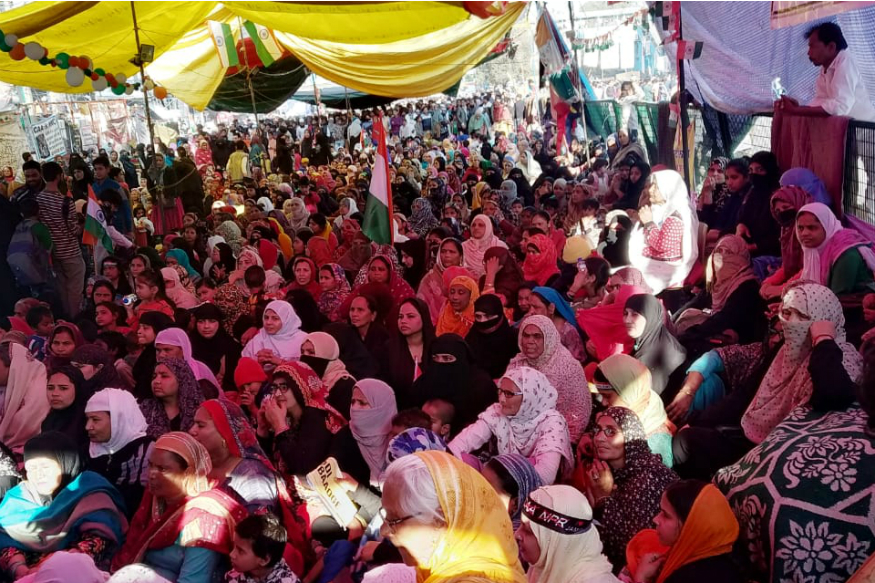The Supreme Court is intervening to help end the anti-CAA protests by a band of ordinary women — not even activists — who are on a sit-in at Shaheen Bagh in Delhi for the past two months. The Apex Court’s emissaries, namely two senior lawyers and a former Chief Information Commissioner, have been tasked to try and persuade the protesters to either end or shift their protest to a new site away from the central thoroughfare. The protest, from its very beginning, has emerged as the focal point of the anti-CAA agitation by Moslems and activists of various hues. Interestingly, it does not seem to be backed by Opposition parties. This is evident because of the continuation of the protest even after the end of elections in Delhi.
The protest, by mainly housewives in the area and beyond, has been peaceful, orderly and sans the usual hype.
The Shaheen Bagh protest has encouraged similar protests by ordinary Moslem women in many other cities too, widening the contours of the movement.
While the initial phase of the anti-CAA protests were led by students of Jamia Millia Islamia University, Aligarh Muslim University and JNU, and witnessed violence, arson and heavy police crackdown, Shaheen Bagh scripted a different story and has created history. It presented a non-violent struggle with no focus on any one individual; and the scene was punctuated with singing of National Anthem and display of national tricolor. These gestures by themselves were welcomed by many Hindoos who are religious but not political Hindoos. The Moslem community was being perceived as being hesitant or unwilling to even sing the Anthem.
Clearly, the protesters made a significant attempt to remain within the system, rather than challenging it. What they demanded in essence was upholding of the Constitution-guaranteed rights to one and all with an insistence that religious discrimination must be questioned.
Shaheen Bagh saw women taking the leadership of a Moslem action programme. This is a rarest of the rare occurrence and men, for a change, stood by their side. This is significant in the context of the evolution of women’s rights movements in the country and of such strains within the Islamic religion too. It is also significant that the women’s initiative came shortly after the new law against Triple Talaq came into being and such action by men being made a criminal offence. The triple talaq law might or might not have endeared Moslem women to the BJP or PM Modi but what is clear is that the CAA brought these women to the forefront of the protests against the Modi government.
CAA, on the face of it, is meant to flush out illegals who entered the country mainly from Bangladesh and ensure a semblance of order in the citizenship and identification process which was dysfunctional as claimed by the government. At the same time, the problems it could spawn at the implementation stage raised fears among sections of the population, and mainly among the Moslems, who feared many among them could end up as stateless citizens or get detained for want of sufficient domicile proof.
It may also be noted that similar to the NPR, NRC and Aadhaar, the CAA exercise will also be an unending continuous process to be funded by tax payers’ money forever and ever. While that would be a constant burden, the central government is not providing any specific figures regarding the suspected illegal immigrants those that have entered India and become residents here.
It was incumbent on the government to tread a careful course, and give reassurance to the people at large. Instead, what was noticed from the side of the ruling BJP and government functionaries was a sense of authority to implement without considering ground realities.
As the Supreme Court noted, the right to protest is a fundamental right. No one can question this right. At the same time, where the court saw a need for intervention was in the extent of public inconvenience the sit-in caused vis-a vis diversion of traffic to other routes etc. It was being saner on the part of the government and Delhi Police too to have avoided an aggressive counter-response to the women protesters by way of arrests etc. The protesters too, by resort to the non-violent, peaceful, patriotic mode, effectively disarmed the government and it’s goon gang—the Police. The women made sure they resorted to democratic means of protest only without giving a chance to anyone to raise a finger at them – other than in the selection of the site for the protest. This matter too might, hopefully, be sorted out by the Apex Court emissaries, one of whom is Moslem himself, in a democratic and conciliatory manner via negotiations.
Shaheen Bagh gave the nation’s main minority community an opportunity to ably vent its grievance from a public platform. By such protests, the cause of democracy is served well and strengthened. Hurt feelings need a safety valve to exhale the tensions built within individual and group selves. The initiative of the SC in this respect may also work as balm on hurt sentiments after the utterances of the Union Home Minister Amit Shah wherein he asked people to vote so strongly in favor of the BJP candidates that the ‘current’ hits the protesters at Shaheen Bagh.
